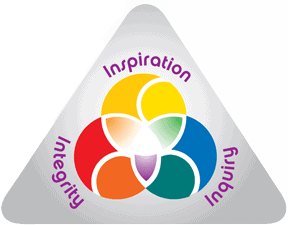How Can a School Promote a Culture of Innovation?
As I enter the “Omega” (7th and 8th grade) classroom at Rainbow Community School, a large Buckminster Fuller-designed dymaxion world map is on the floor, the basis for a game where students are moving around chips that represent various world resources.
Incorporating Systems Thinking
Two students with laptops are meeting with Jason Cannoncro, one of the lead teachers, about a grant proposal they are writing to create a local non-profit organization that will give homeless people work on the many organic farms in Asheville. Several students are puzzling over models they are creating of sustainable energy systems. One girl is playing a radio powered by a tiny solar panel system she designed herself.
How Can We Design Systems to Ensure All Humans Have Their Needs Met?
The curriculum at Rainbow Community School has been carefully designed and refined to prepare students for the culminating middle school unit described above.The essential problem that students ask and begin to solve in that unit is,
“How can we design our systems and our culture to ensure that all humans on Earth have their needs met, without depleting planetary resources?”
The Native Americans thought of sustainability in terms of seven generations. They might have asked the essential question for the unit in this format: “How can we provide dignity for each human and all living beings for the next seven generations?”In this unit students are asked to think about human equity and fulfillment, and how to get there. They are required to develop designs and prototypes for inventions that help sustain the natural world, while providing for a high quality of living. Students who are successful within this multi-faceted, complex unit are the next generation of innovators. How does Rainbow Community School prepare its students for this culminating unit?
You can find out how RCS prepares its students and more on part IV here.
RCS Director, Renee Owen has a series of Educating the Innovation Generation articles.
Click below to see the other parts:
Educating the Innovation Generation – Part I








